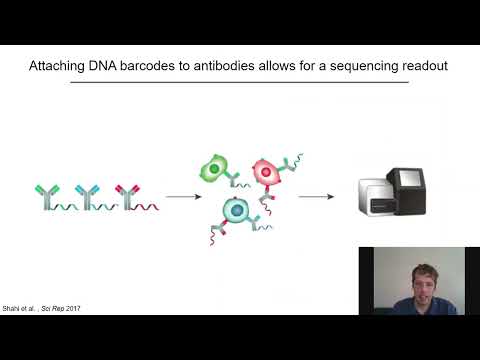Description:
Explore a 33-minute webinar on cell pathology revealed through single-cell genotype-phenotype mapping. Delve into the complexities of cancer genetics, focusing on how somatic mutations drive disease progression and serve as prognostic markers. Learn about the challenges of linking genotypes to phenotypes in polyclonal tissues and discover how single-cell resolution methods address these issues. Examine the application of droplet microfluidics and single-cell sequencing techniques in resolving tumor heterogeneity. Investigate the process of single-cell genotyping and immunophenotyping, including DNA barcoding of antibodies for sequencing readouts. Analyze high-dimensional data visualization techniques and their application in understanding clonal diversity and disease progression. Explore case studies demonstrating the method's effectiveness in complex patient samples. Finally, consider the potential applications of this technology in studying HIV latency and identifying distinct T cell subcompartments affected by the virus.
Read more

Cell Pathology Revealed by Single-Cell Genotype-Phenotype Mapping
Add to list
#Science
#Biology
#Cell Biology
#Genomics
#DNA Sequencing
#Data Science
#Bioinformatics
#Single-Cell Analysis
#Cancer Biology
#Tumor Heterogeneity